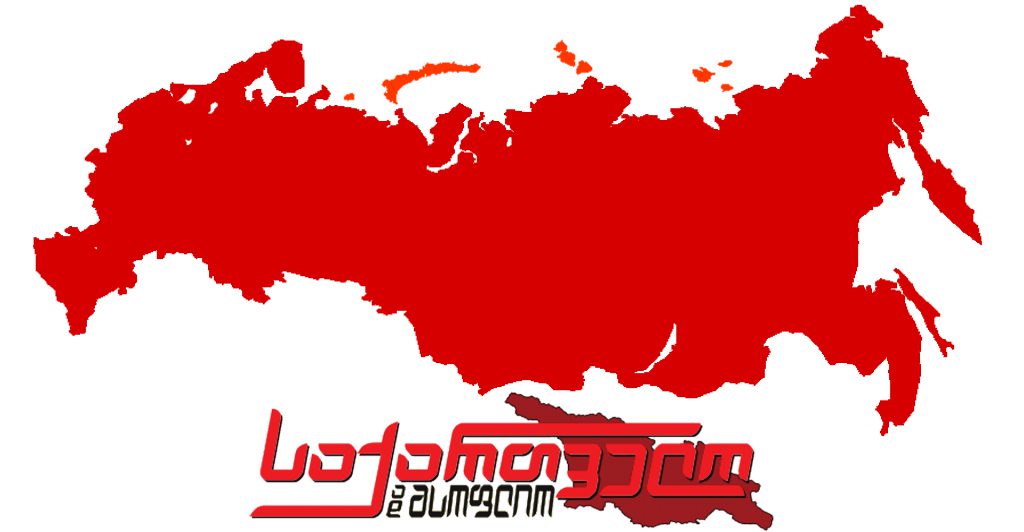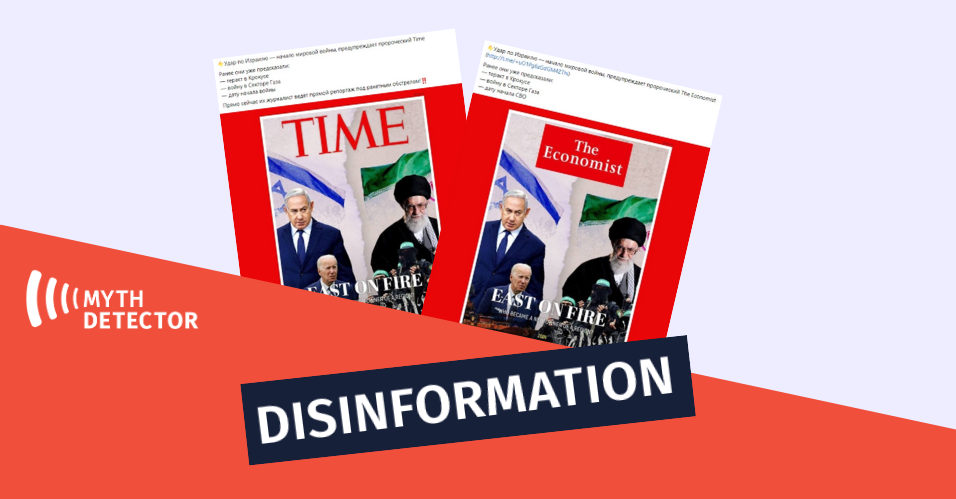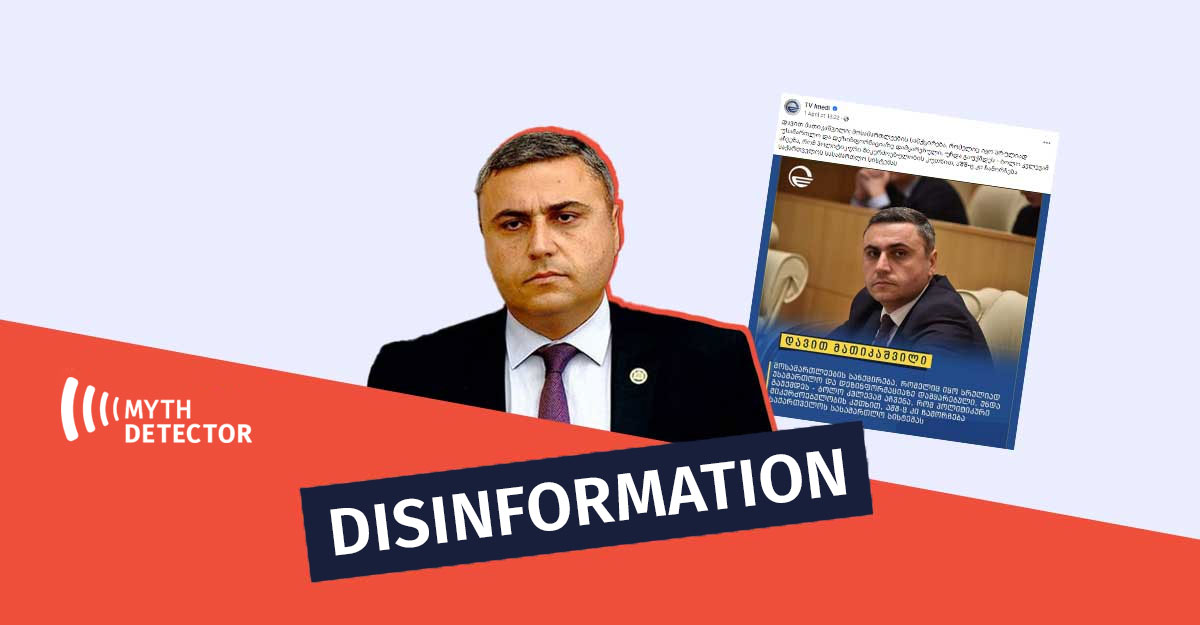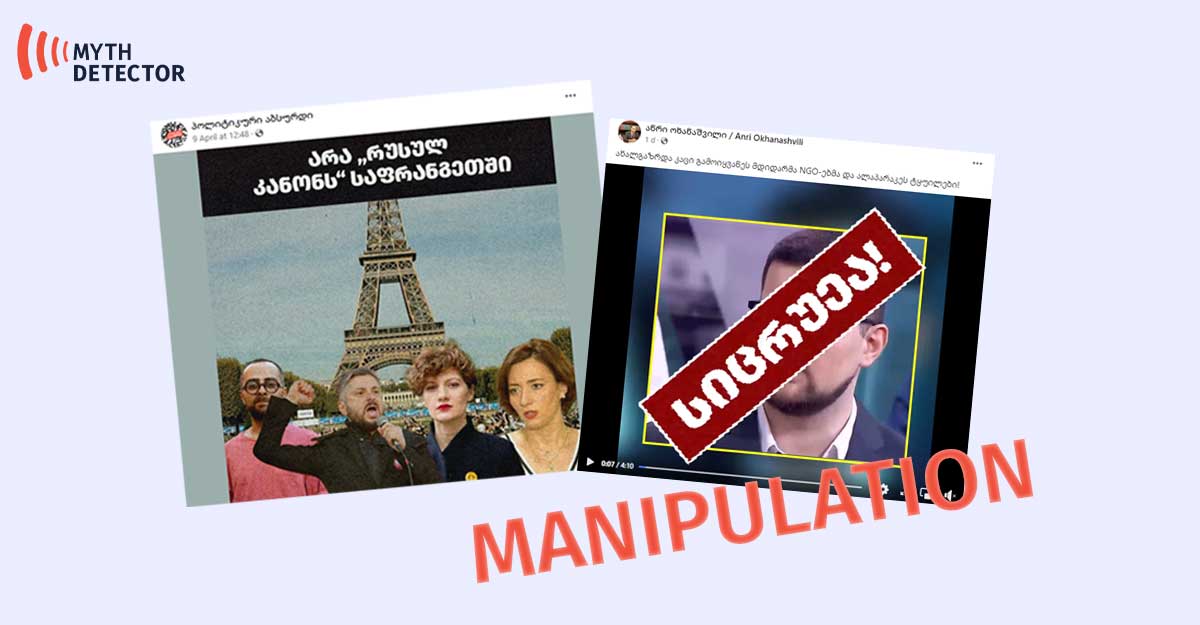On May 28, 2019, an online newspaper Geworld.ge (Georgian and World) released an article headlined “Many States Exist Thanks to Russia.” The author describes Russia as a liberator and highly appreciates its historical importance. According to the article, many states exist just thanks to Russia and, unlike the Americans and the Spanish, Russia regularly cares for small nations. Geworld names Latvia as an example, where, as the author claims, the first textbook of the Latvian language was printed upon the initiative of the Russian Emperor.
Russia’s portrayal as a positive force in the pro-Kremlin media outlets is not a new development. This narrative remains relevant in the states once occupied by Russia. Propagandistic media outlets undermine western states through spreading fake and manipulative reports, simultaneously actively defending Russia’s positions to strengthen sympathies towards this country. The Myth Detector offers three myths about Russia’s policy.
Myth N1: The first textbook of the Latvian language was printed in Riga only in 1868. Its creation was initiated by the Russian government.
Real fact N1: The Latvian language textbooks were already published in Latvia as far back as the 17th century.
Latvia has a great literary culture. The first printed text was published there in 1525. The oldest book preserved to this day was published in 1585. Mainly religious literature was published during the first stage and later, in the 17th century, we also meet secular literature. The Germans have made a special contribution in respect of language textbooks; they have significantly enriched the history of Latvian linguistic literature. The first dictionary was published in 1638 and the first grammar book in 1644.
To inquire information, the Myth Detector contacted the Latvian Language Agency, which provided information about the first language textbook. Georg Mancelius (1593-1654), a Lutheran theologian, was the first person to have linguistic records about the Latvian phonetics and grammar. He wrote about this issue in his textbook Lettisch Vademecum (1631). He was the first person, who published the Latvian language textbook in three parts – the first part, German-Latvian dictionary Lettus (1638), followed by a thematic dictionary Phraseologia Lettica and 10 conversational dialogues in Latvian with translations enclosed. The first Latvian grammar, Manuductio, which was designed for learning the language, was written by Johann Georg Rehehusen (apparently in 1630). The book was published later in 1644. The book published by Henrico Adolphi is also worth noting.
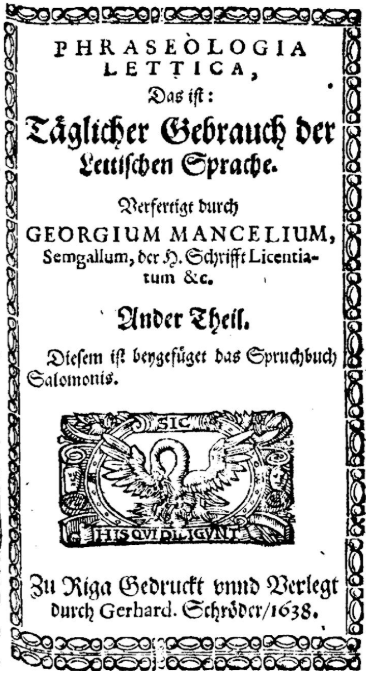
Phraseologia Lettica
he assertions as if Russia cared for the Latvian language are incorrect, because the Russian Empire and later the Soviet Union were constantly trying to restrict the Latvian language, like in other countries incorporated into the Empire. In the 1880s, when Alexander III came to power, Russification further intensified. Some Latvian scholars suggested adopting Cyrillic for use in Latvian. Around the start of the 20th century, nationalist movements reemerged.
Myth N2. Russia has never destructed small nations and neither has it tried to assimilate them through use of force
Real fact N2: Russia constantly tried to subject small nations to genocide, assimilation or ethnic cleansing
Since the existence of the Empire till present, Russia’s history has been full of various cases of genocide, ethnic cleansing and assimilation. Russia has used this method to make the occupied territories subordinate it.
- Circassian genocide
Abazin-Circassian genocide is one of the crimes committed by Russia that caused outflow or death of 90% of this nation’s population. Russia was actively trying to change ethnic composition in the North Caucasus to easily exert influence on it. Georgia recognized ethnic cleansing in Chechnya as genocide and the Parliament even released a special scientific work, according to which the entire loss of gene pool of Circassian people amounted to more than 20%.
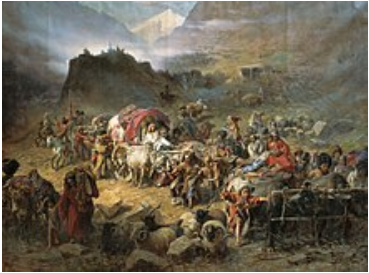
The mountaineers leaving the aul by Petre Gruzinsky, 1872
Abazin-Circassian ethnic cleansing took place in 1864-1867; however, the same process began against other Caucasian peoples 150 years earlier. Russian Emperor Alexander II notes in a special rescript:
Russia treated Circassian population outrageously. This fact is confirmed by various historical sources. Such cruelty should have become an example for other nations as well, so as the Empire had avoided rebellions of small nations. One of the witnesses, I. Drozdov recollects in his book “The final fight with the Highlanders in the West Caucasus:”
On February 7, 1992, the Supreme Council of the Kabardino-Balkar ASSR adopted a special resolution, which recognized ethnic cleansing carried out by the Russian Empire as genocide and demanded Russia to recognize this fact. Russia, however, is reluctant to recognize it. Walter Richmond, writer and professor from Arizona State University writes in his book “The Circassian Genocide” that the Russian government still tries to obstruct the inquiry into the case. In his opinion, the Russian government even set up a special presidential commission to avoid accusations about the Circassian genocide.
- Muhajirism
A term “Muhajirism” is related to ethnic cleansing of the Circassians as well as other Caucasian peoples by the Russian Empire in the 19th century. Following the Caucasian War, Russia completely conquered this region. It also intended to exert influence on the entire Caucasus through assimilation and ethnic cleansing. Cleansing reached its culmination in 1863-1864. Along with Circassians and Chechens, this process also covered other peoples, among them the Ubykhs, Abazins, Kuban Nogais, Karachays, Abkhaz and Georgian Muslims.
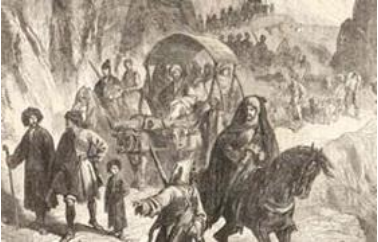
The Caucasus peoples leaving their villages
Total number of Muhajirs amounted to 800,000 and the majority of them resettled to Turkey. As a result, many ethnic groups have completely disappeared from the Caucasus territory. The Russian Empire managed to conquer an important strategic territory and still occupies its significant part. Russia does not try to repatriate these peoples and even avoids any responsibility. In 1994, Russian President Boris Yeltsin released an appeal to the North Caucasian peoples (Appeal to the Caucasian peoples), where he condemned the developments of the 19th century; however, it yielded no tangible results and the issue of Muhajirs remains neglected in Russia.
- Russian-Chechen war
Russia had been oppressing the Chechen people since the Caucasian War and the period of Muhajirism; this oppression and destruction of this small nation continued even after the Soviet Union’s disintegration. Following the Soviet Union’s disintegration, Chechnya declared its independence and only Georgia recognized it. In response to this decision, Russian troops entered Chechnya in 1994. During the war, Russia violated ceasefire agreements for multiple times.
Up to 100,000 people – many of them civilians – are estimated killed in the 20-month war. Small attacks still continued after the end of the first war. Russia aimed at weakening Chechnya so that it would no longer resist. Chechnya’s another attempt to gain independence triggered a new war with Russia; civilians and residential houses were bombed. Russia had always tried to use force against various ethnic groups and assimilate them not only under the Empire, but even today.
Myth 3: Armenia, Azerbaijan and Georgia were liberated as a result of the Russo-Persian wars
Real fact N3: Russia incorporated these states into the Empire
In the 19th century, two important wars took place between the Persian Empire and Imperial Russia and the both wars began as a territorial dispute for the Trans Caucasus (Georgia, Armenia and Azerbaijan). The first war took place in 1804-1813 and ended with Russia’s victory. The Treaty of Gulistan, a peace treaty, was concluded with Persia (modern day Iran) in 1813. The treaty confirmed the ceding and inclusion of what is today Daghestan, Kartli-Kakheti Kingdom, Principality of Mingrelia, Principality of Guria, Principality of Imereti, Principality of Abkhazia, Baku Khanate, Shaki Khanate and Talysh Khanate. Russia’s actions were not aimed at liberation. It conquered these territories and strengthened its own influence in the Caucasus. So, Persian occupation was replaced by Russian occupation and Georgia, Azerbaijan and Armenia again failed to gain independence.
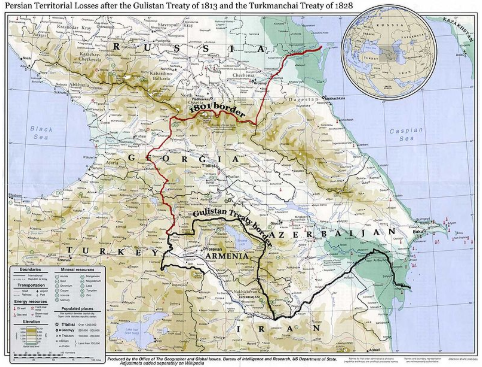
The Treaty of Gulistan
Russia conquered the mentioned territories very easily and pursued a policy of assimilation there. Iran’s continuous territorial claims triggered the second war in 1826-1828 that also ended with Russia’s victory. Russia further expanded its territories and as a result of the Treaty of Turkmenchay, Russia acquired Nakhichevan and Yerevan. None of the states gained independence in this case either. It was not an act of liberation, but rather each treaty replaced suzerain and invader Iran by Russia.
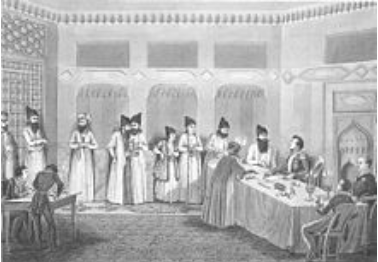
The Treaty of Turkmenchay
The assertions that Russia liberated these three states are manipulative and misleading. Russia’s occupation questioned the issue of existence of these nations, because the policy of assimilation was extremely intensive in all spheres of life. Justification of the Russian Empire’s aggressive policy is one of the characteristics of pro-Kremlin media outlets. The Myth Detector’s previous article on the same topic can be found here.
Prepared by Irakli Iagorashvili
Regional Network of Media Literacy Lab

















